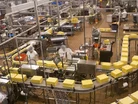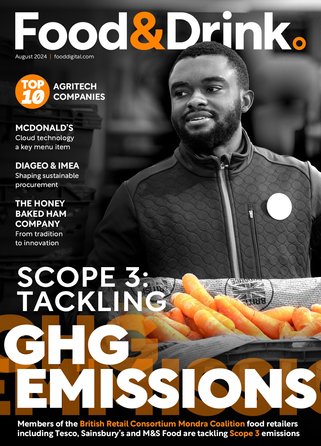Robotics Applications Enhance Food Production Capabilities

The Covid-19 pandemic left many of the world’s food organisations struggling to keep up with increasing demand. As restrictions were imposed upon businesses and more people were spending time at home, technology has played a vital role in keeping the food production industry going. From safety to efficiency, robotics can be applied to various aspects of food production.
Creating Fast, Accurate Production Processes
As food manufacturing develops further, technology could be the solution to a more productive and fulfilled workday. Implementing robotics alleviates the need for personnel to carry the menial tasks that are very time-consuming. Robotics can play a crucial role in cutting production times and carrying out consistent processes through automation. MWC, a cheesemaker based in Michigan, uses robotics as part of its packaging process.
The company was provided with a customised automation system by Zepnick. The system conveys bagged blocks of cheese through side-by-side sealers, then continues through a metal detector and a leak detector, followed by rapid cooling and packing systems. Although automation systems have been used in food production, there is still something to be said for creating bespoke solutions - which Zepnick provides.
“There’s a lot of experience, knowledge and technology that goes into making these systems perform reliably. There are several integrated technologies from mechanical product handling, product accumulation, data collection, product scanning and tracking, and vision inspection,” Zepnick says. “Really, the challenge was matching MWC requirements with the most robust configuration of equipment and technology to meet their business needs.”
Food Safety and Hygiene
Robotics can help prevent cross-contamination in food production. Due to the nature of foodborne pathogens, manufacturers can never be too careful with hygiene. The use of robotics minimises human contact with food and mitigates human hygiene errors. Implementing dedicated robotics for each stage of the production process - that involves handling food - will limit how far pathogens can travel within factories.
Collaborative Robots for Efficiency
Operating large machinery can become a hazard to workers on a production line. They can also require a lot of experience to operate efficiently. AI-based machines and connected factory solutions can provide a very efficient network of machine that work together in tight spaces. While padded joints can be applied to machines to make them safer, the use of a digital factory system can mitigate the need to work in close proximity with machines. Digital transformation of food production will release personnel for tasks that require more input.
For more food insights, check out Food Digital magazine.



